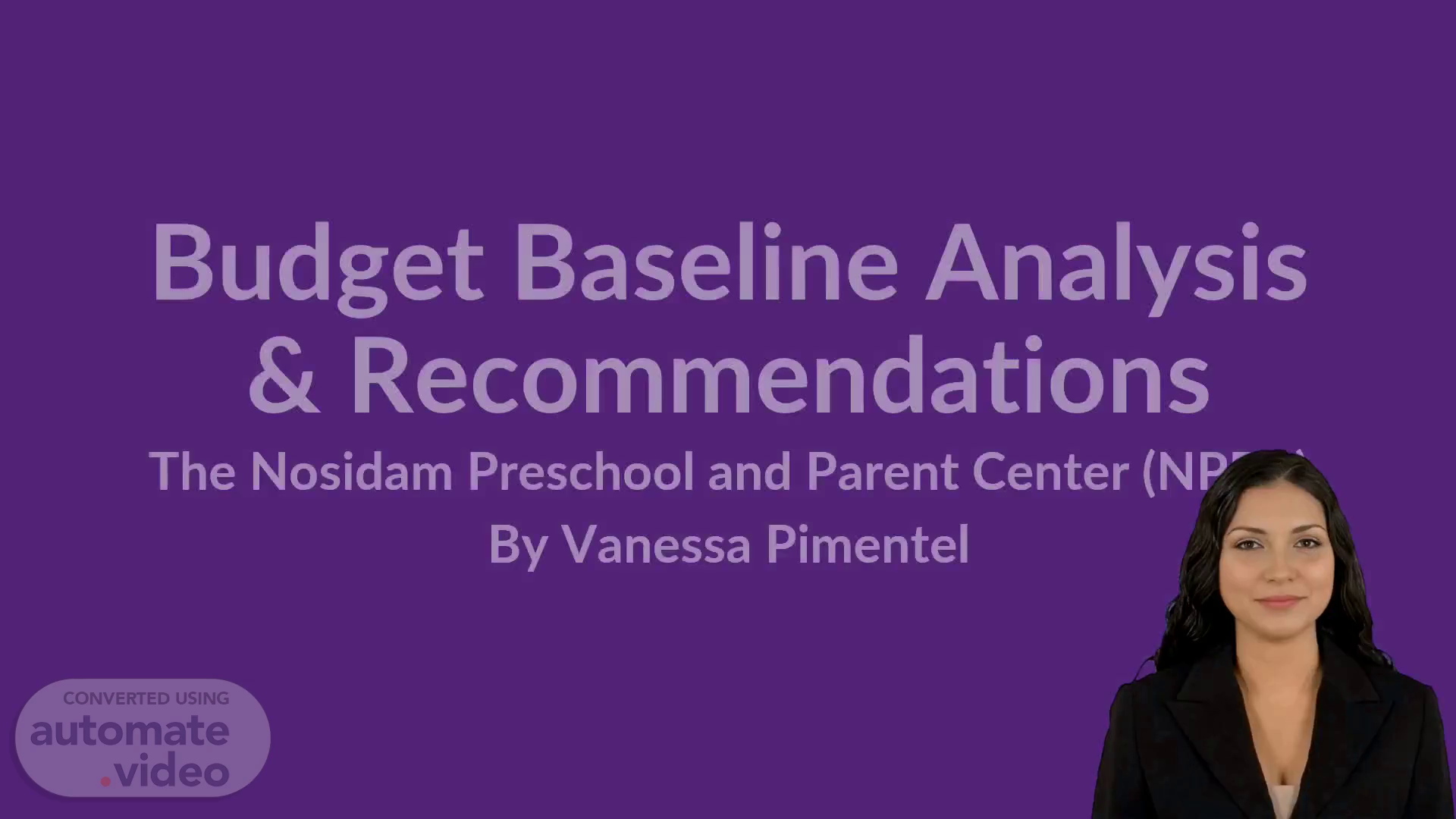Scene 1 (0s)
[Virtual Presenter] Good morning everyone. Today, we are here to discuss the budget baseline analysis and recommendations to ensure financial stability for The Nosidam Preschool and Parent Center. We will be examining the opportunities and challenges associated with providing preschool and parent center services..
Scene 2 (21s)
[Audio] Our analysis has shown that the NPPC has experienced a decrease in revenues over the past year resulting in a deficit. The majority of the budget is allocated towards staff and program costs and it is essential to ensure these costs are closely monitored to guarantee the long-term stability of the preschool center. Looking ahead, it is important to have a comprehensive understanding of the current financial situation..
Scene 3 (48s)
Revenue Sources. A graph of a graph of a student Description automatically generated with medium confidence.
Scene 4 (56s)
Expenditures. A chart of different colored rectangles Description automatically generated.
Scene 5 (1m 3s)
[Audio] NPPC has had a successful year with the launch of a new preschool curriculum and the success of the parent mentorship program. Nevertheless, there have been losses from the costs of running these programs. After revisiting our budget baseline, we have proposed certain measures to improve our financial position going forward..
Scene 6 (1m 26s)
[Audio] Our recommendation for the Nosidam Preschool and Parent Center is to set a budget baseline, conduct a detailed analysis of the current budget, and review the budget every quarter in order to ensure sustainability and successful financial future. With this approach, we can maintain oversight of spending while keeping financial goals a priority..
Scene 7 (1m 48s)
[Audio] To ensure long-term sustainability for the Nosidam Preschool and Parent Center, the student-to-teacher ratio needs to be increased from six students to one teacher to meet the guideline of nine students per adult. Moreover, the average classroom size should also be increased from its current 16.8 students to the maximum of 24. These two changes will enable the center to meet the standards for quality education and sustain itself in the long run..
Scene 8 (2m 18s)
[Audio] As part of the proposed action plan, the number of students enrolled in the NPPC from 2021-2022 onwards will be increased. In 2022-2023, the number of students is planned to be increased to 84, divided among four classrooms with three teachers assigned to each. This will consist of both 6 scholarship students and 6 students without a scholarship. By the start of 2024, the number of students is expected to be increased to 94, with five classrooms and 15 teachers. This group will comprise of 13 scholarship students, 13 students without a scholarship, as well as three additional teaching staff. These modifications should guarantee that all students attending the NPPC obtain the best quality education..
Scene 9 (3m 11s)
END OF YEAR TOTAL GAINS / LOSSES FY2022 FY2023 FY2024 FY2025 FY2026 FY2027 END OF YEAR TOTAL GAINS / LOSSES $25,000.00 $27,621.40 -$11,627.47 -$108,176.23 -$242,555.79 -$417,091.95.
Scene 10 (3m 43s)
[Audio] The justification for the recommendations is that a student-to-teacher ratio of 8:1 is needed, which is lower than the recommended guideline of 9. This will not only increase career prospects for our floating teachers, but will also enhance job satisfaction and provide professional growth. Moreover, it gives us the ability to explore different school funding options, like fundraising, grants, and partnerships, without worrying about the possibility of school closure. Lastly, we can broaden our diversity through our scholarship programs..
Scene 11 (4m 19s)
[Audio] NPPC's sustainability can be bolstered through several measures. Housing student teachers or interns can help to save costs. Inviting parents and the community to participate in PTA fundraising activities can generate more revenue. Moreover, the budget can be more diversely funded through grants and partnerships. All these methods can help to make the budget reliable and sustainable..
Scene 12 (4m 48s)
Conclusion / Questions.
